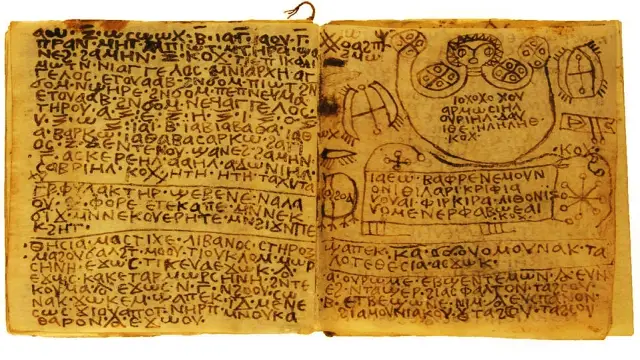Researchers in Australia have made an exciting discovery. They have deciphered an ancient Egyptian book known as the “Handbook of Ritual Power.” This remarkable text reveals a collection of invocations and spells. It includes instructions on how to cast love spells, exorcise evil spirits, and even treat “black jaundice,” a serious bacterial infection that still exists today.
The handbook is about 1,300 years old and is written in Coptic, an ancient Egyptian language. It is a codex, which means it is made of bound pages of parchment. According to Malcolm Choat and Iain Gardner, professors at Macquarie University and the University of Sydney, respectively, this codex is a complete 20-page document that serves as a guide for ritual practitioners.
The book begins with a long series of invocations. These invocations are followed by drawings and powerful words. After that, it provides various spells to help with spirit possession, illnesses, and even to achieve success in love and business. For example, to control someone, the codex instructs you to say a magical formula over two nails. You then drive one nail into the right side of their doorpost and the other into the left.
Researchers believe this codex dates back to the 7th or 8th century. During this time, many Egyptians were Christians. The text includes several invocations that reference Jesus. However, some invocations are linked to a group known as the Sethians. This group thrived in Egypt during the early years of Christianity and held Seth, the third son of Adam and Eve, in high regard. One invocation in the codex even calls out, “Seth, Seth, the living Christ.”
The opening lines of the codex mention a mysterious divine figure named Baktiotha. The translation reads, “I give thanks to you and I call upon you, the Baktiotha: The great one, who is very trustworthy; the one who is lord over the forty and the nine kinds of serpents.” Choat and Gardner describe Baktiotha as an “ambivalent figure,” a powerful ruler in the material world.
Historical records show that church leaders considered the Sethians heretics. By the 7th century, this group was either extinct or fading away. The codex, with its blend of Sethian and Orthodox Christian invocations, may represent a transitional document. It was likely written before all Sethian references were removed from magical texts. Other similar texts exist, but they contain more Orthodox Christian elements and fewer Sethian features.
The identity of the person who used this codex remains a mystery. It is unclear if the user was a priest or a monk. Choat suggests that there were ritual practitioners outside the clergy. However, the exact identities of these practitioners are unknown. Many people did not want to be labeled as “magicians,” which adds to the mystery.
This ancient handbook offers a fascinating glimpse into the spiritual practices of its time. It shows how people sought to connect with the divine and navigate the challenges of life. The blend of Christian and Sethian elements highlights the complex religious landscape of ancient Egypt.
In conclusion, the “Handbook of Ritual Power” is more than just a collection of spells. It is a window into the past, revealing the beliefs and practices of a society that sought to understand the world around them. As researchers continue to study this codex, we may uncover even more secrets from ancient Egypt.
Source: Live Science

